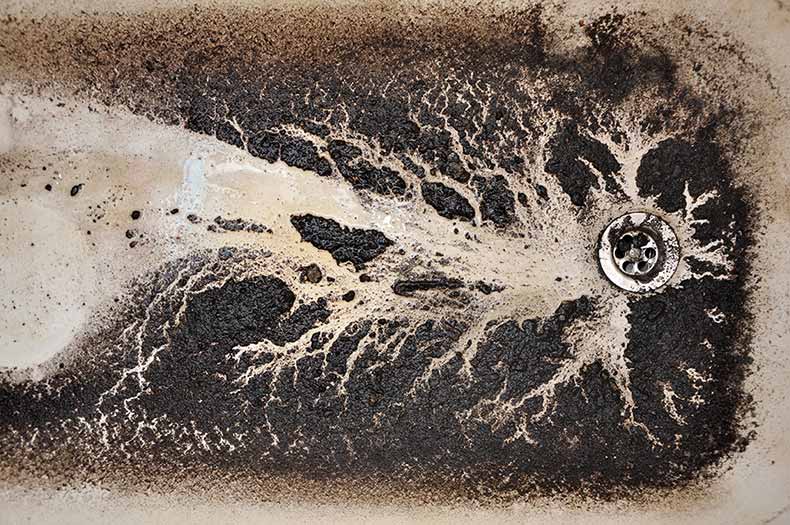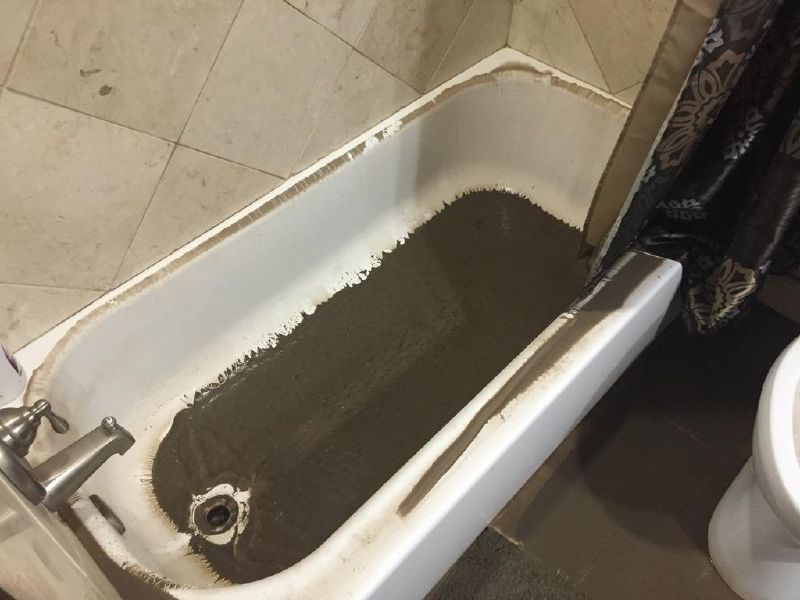Unpacking the Mystery of Sewage in the Bathtub
SourceThis article underneath relating to Why is Sewage Backing Up Into My Bathtub? is unquestionably entertaining. Read on and draw your own ideas.

Sewage backup in the bath tub can be a traumatic and unhygienic problem for any kind of house owner. Not only is it troublesome, yet it additionally poses significant wellness dangers and indicates underlying issues with the plumbing system. Understanding why sewage is coming up via the tub is crucial for taking appropriate activity to resolve the issue efficiently.
Intro to the Issue
Common Factors for Sewer Back-up
Clogs in the Sewer Line
Among the most usual sources of sewer backup is a clog in the sewer line. This can take place because of the accumulation of debris, oil, or foreign objects in the pipes, protecting against proper flow and triggering sewage to support into your bathtub.
Tree Origin Intrusion
Tree roots seeking dampness and nutrients can infiltrate sewer lines through tiny fractures or joints. With time, these roots can grow and expand, causing substantial damages to the pipes and causing sewage back-up issues.
Comprehending the Problem
When sewage starts backing up into the bath tub, it's a clear indication of a problem with the drain system. The wastewater that needs to be streaming away from your home is rather discovering its way back into your living space, which can cause substantial damage and carcinogen.
Prospective Reasons
Numerous elements can add to sewer backup in the bathtub. From obstructions in the sewer line to issues with the plumbing facilities, identifying the root cause is essential for finding a solution.
Aging Facilities
Older homes may have dated plumbing systems that are extra susceptible to deterioration, splits, and wear and tear. As pipes age, they end up being extra susceptible to leaks and obstructions, enhancing the probability of sewage back-up incidents.
Heavy Rainfall or Flooding
Throughout periods of heavy rainfall or flooding, the drain system might end up being overwhelmed with excess water, triggering back-ups and overflows. This can result in sewage supporting into tubs and various other components inside the home.
Indications of Sewer Back-up
Foul Odors
Undesirable smells emanating from drains pipes or components, particularly in the shower room, may suggest sewer back-up concerns. These odors are frequently solid and relentless, signifying a problem that needs prompt focus.
Slow Draining Fixtures
Tubs, sinks, and commodes that drain pipes slowly or not whatsoever could be experiencing sewage backup. If several components are influenced simultaneously, it's likely that the issue originates from a typical factor, such as the major drain line.
Gurgling Noises
Strange gurgling or bubbling noises coming from drains pipes when water is running somewhere else in your house are indicative of air entraped in the plumbing system. This air accumulation can result from sewage backup and must be examined promptly.
Health Risks Connected With Sewer Back-up
Contamination of Water System
Sewage backup can pollute the water system in your home, positioning a significant wellness threat to you and your family members. Exposure to polluted water can cause stomach problems, skin infections, and various other illnesses.
Mold Development
Moisture from sewage backup can produce excellent problems for mold and mildew development in your home. Mold spores can aggravate breathing problems and trigger allergic reactions in sensitive people, making timely cleanup necessary.
Spread of Condition
Sewer has unsafe bacteria, infections, and bloodsuckers that can cause a variety of illness, including liver disease, cholera, and gastroenteritis. Coming into contact with sewage or polluted surfaces places you in danger of infection.
Tidying up After Sewer Back-up
Sanitation Procedures
Completely disinfect and sanitize impacted locations after sewage back-up to get rid of dangerous bacteria and avoid mold and mildew growth. Use appropriate cleaning items and safety equipment to make sure safe and efficient clean-up.
Remediation of Affected Areas
Fix any kind of damages to flooring, wall surfaces, or fixtures brought on by sewer backup. Depending on the level of the damage, you may need to change carpeting, drywall, or various other products to recover your home to its pre-loss problem.
Immediate Actions to Take
Switching Off Water
In the event of sewage back-up, it's essential to shut off the water system to stop additional contamination and damage. Find the primary water shutoff valve in your home and shut it off until the issue can be settled.
Calling a Specialist Plumber
Managing sewer backup is not a do it yourself job. Contact a licensed plumber with experience in managing sewage-related issues to analyze the scenario and execute necessary repair services or cleanups.
Avoiding Contact with Infected Water
Till the sewer backup is resolved, prevent contact with infected water to avoid the spread of germs and microorganisms. Use protective equipment if you must remain in the damaged location and clean your hands extensively later.
Preventive Measures
Routine Maintenance of Sewage System Lines
Schedule routine examinations and maintenance of your drain lines to determine and attend to possible problems before they rise right into major issues. This can consist of clearing out debris, inspecting for tree origin breach, and repairing any type of damaged pipes.
Setting Up Bayou Shutoffs
Consider installing bayou shutoffs in your plumbing system to stop sewer from receding right into your home during periods of heavy rainfall or flooding. These valves immediately close when water draws back up, safeguarding your property from contamination.
Proper Disposal of Household Waste
Avoid purging anything aside from toilet tissue and human waste down the toilet to stop blockages and blockages in the drain line. Dispose of grease, oil, and other house chemicals effectively to lessen the risk of plumbing troubles.
Why Is Water Backing Up in My Bathtub When I Flush My Toilet?
What to do about a sewer line clog
First, don’t bother with plunging. No amount of plunging will dislodge the clog in a sewer line. The clog is too far away. Plungers are for clogs in the toilet itself, not the sewer line. Plus, the most likely causes of a sewer clog are:
Tree roots Flushed toys or feminine products Grease buildup Those items don’t move easily. And in the case of tree roots, the roots need to be cut out of the pipe and the pipe will need to be repaired.
You’ll need a closet auger. A closet auger is a type of plumber’s snake with a protective cover to keep from scratching the delicate porcelain toilet. If the clog is further down, you may need to remove the toilet or use one of your cleanouts to get to the clog.
We also recommend doing a video inspection of the drain to ensure that the cause of the clog has been completely removed. Otherwise, you could have the same problem again in a few days or weeks.
https://mspplumbingheatingair.com/blog/why-is-water-backing-up-in-my-bathtub-when-i-flush-my-toilet

I stumbled upon that piece about when scouting around the internet. Sharing is nice. Helping people is fun. We appreciate your readership.
Call Today